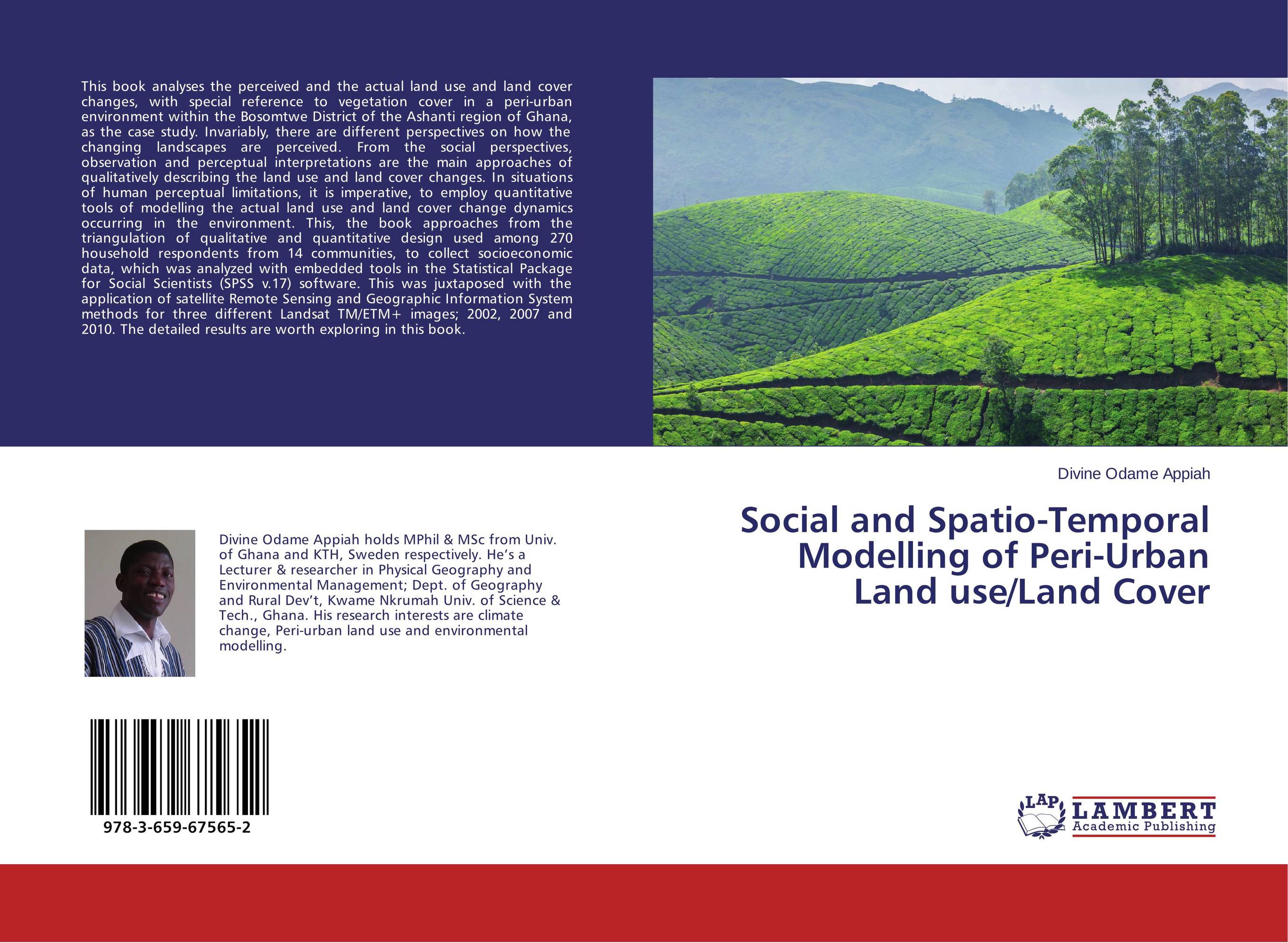| Поиск по каталогу |
|
(строгое соответствие)
|
- Профессиональная
- Научно-популярная
- Художественная
- Публицистика
- Детская
- Искусство
- Хобби, семья, дом
- Спорт
- Путеводители
- Блокноты, тетради, открытки
Social and Spatio-Temporal Modelling of Peri-Urban Land use/Land Cover.

В наличии
| Местонахождение: Алматы | Состояние экземпляра: новый |

Бумажная
версия
версия
Автор: Divine Odame Appiah
ISBN: 9783659675652
Год издания: 2015
Формат книги: 60×90/16 (145×215 мм)
Количество страниц: 68
Издательство: LAP LAMBERT Academic Publishing
Цена: 25266 тг
Положить в корзину
| Способы доставки в город Алматы * комплектация (срок до отгрузки) не более 2 рабочих дней |
| Самовывоз из города Алматы (пункты самовывоза партнёра CDEK) |
| Курьерская доставка CDEK из города Москва |
| Доставка Почтой России из города Москва |
Аннотация: This book analyses the perceived and the actual land use and land cover changes, with special reference to vegetation cover in a peri-urban environment within the Bosomtwe District of the Ashanti region of Ghana, as the case study. Invariably, there are different perspectives on how the changing landscapes are perceived. From the social perspectives, observation and perceptual interpretations are the main approaches of qualitatively describing the land use and land cover changes. In situations of human perceptual limitations, it is imperative, to employ quantitative tools of modelling the actual land use and land cover change dynamics occurring in the environment. This, the book approaches from the triangulation of qualitative and quantitative design used among 270 household respondents from 14 communities, to collect socioeconomic data, which was analyzed with embedded tools in the Statistical Package for Social Scientists (SPSS v.17) software. This was juxtaposed with the application of satellite Remote Sensing and Geographic Information System methods for three different Landsat TM/ETM+ images; 2002, 2007 and 2010. The detailed results are worth exploring in this book.
Ключевые слова: Ghana, GIS, Land Use Land Cover, Logistic Regression, Perception, peri-urban, Remote sensing, Peri-urban environment, Bosomtwe district, Subsistent Agriculture, Forest land use



